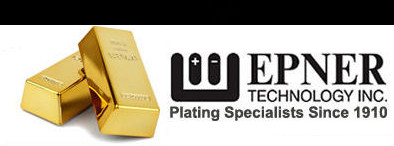Substrates
Laser Gold is usually applied over metal substrates including, but not limited to, aluminum, beryllium, copper, stainless, molybdenum, titanium. Non-metallic substrates such as Zerodur, silicon, quartz, BK7 etc. can also achieve the durability and reflectivity of Laser Gold by first applying a binder coating (usually chromium) by sputtering or vacuum deposition (see specification plating and substrates).
Overcoat
None, and none required. It exhibits the broadband reflectivity of a pure gold surface, except that this surface can be physically wiped clean.
Thickness
Laser Gold plating can be applied from 0.1 micron to 100 microns or more. The heavier deposits have been used for single point diamond turning directly into the Laser Gold plated surface and for ruling diffraction gratings. The thinner coatings are used when the optical figure is critical.
Uniformity
Laser Gold plating can be applied with remarkable uniformity across surfaces as large a 1-meter in diameter. Because it is electrolytically deposited, Laser Gold can exhibit high current density “runout” but special tooling and years of experience permit Epner Technology to eliminate the effect of this phenomenon. Because Laser Gold plating is not line-of-sight dependent, it can thus coat the inside of lightpipes or other deep cavities with parallel walls.
Temperature
There is virtually no risk of optical distortion during processing since metal substrates are never subjected to more than 70°C (150°F). Non-metal optics will see temperatures that are typical of vacuum coating chambers.
Laser Gold plating itself is qualified to meet the thermal stresses of space.
Size
The largest beryllium mirror (0.9 meter diameter) ever gold coated was plated with Laser Gold. It was the Vegetation Canopy Lidar mirror for NASA Goddard. Prior to that, the largest mirrors gold coated at Epner were the KECK Telescope IR Secondary Mirror and the Mars Observer Laser Altimeter Mirror both 0.5-meter in diameter.
